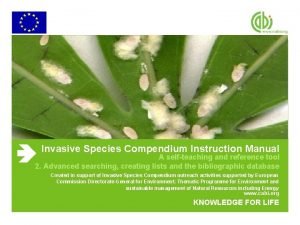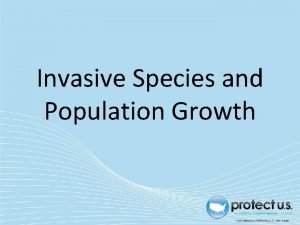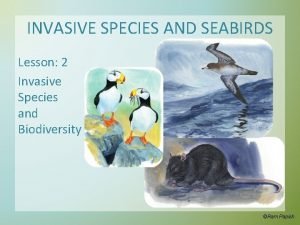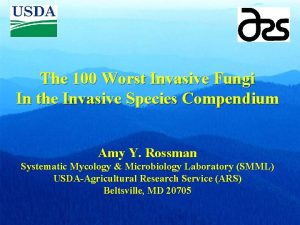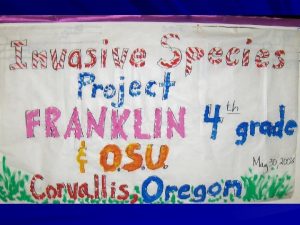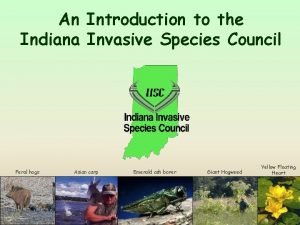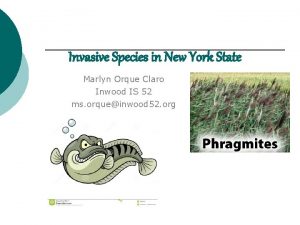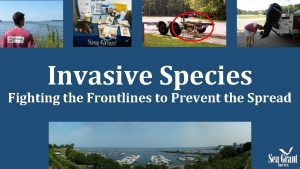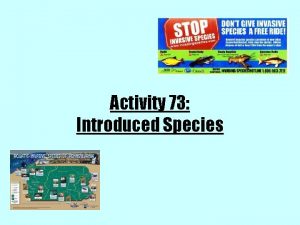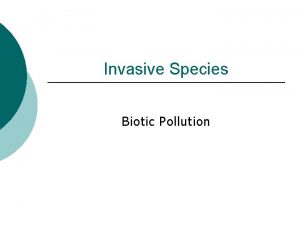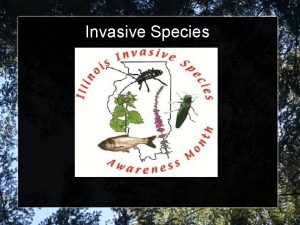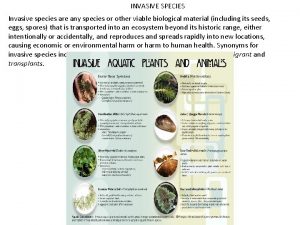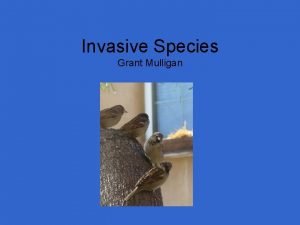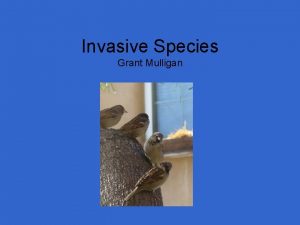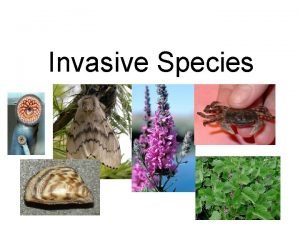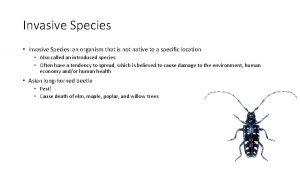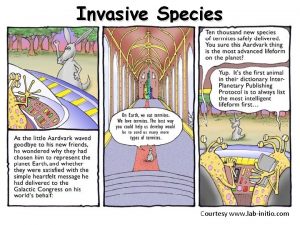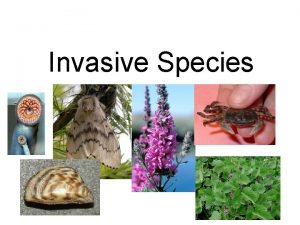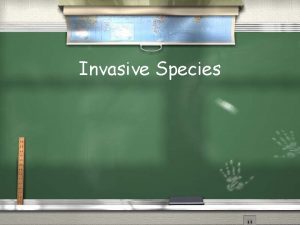Invasive Species Invasive vs Native Species The Effect


















- Slides: 18

Invasive Species • Invasive vs. Native Species • The Effect of an Invasive Species on an Ecosystem • The Small Asian Mongoose • Controlling Invasive Species • 5 Extreme Invasive Species

What is an Invasive Species? What is a Native Species? 1) Come up with a definition for both by yourself. 2) With the person beside you, discus what you came up with and create a new definition for each. 3) Have your group join another. Once again join forces, discuss your ideas and create an final definition for each term.

Invasive Species – The Story of Bunny

Invasive Species • Non-native (not naturally found) species which are added to an area. – Can be natural – migration due to habitat loss or range extension. – Or can be a result of human activity. Japanese Beetle – originally from Japan. It consumes the leaf material between the veins killing the plant and will also feed on fruit on the plants if present. Kudzu – Grows about a foot per day and covers 150, 000 acres per year. It costs the U. S. an estimated $6 million annually

Native Species • Native species are found in an area as a result of nature processes only. • They have developed naturally in a given area over time.

The Effect of an Invasive Species on an Ecosystem • They are four major threats invasive species pose. They can: 1. alter the ecosystem. 2. destroy forests, crops or both. 3. reduce the beauty or use of the land. 4. introduce diseases or other negative health affects.

1. Alter the Ecosystem • Invasive species grow in number quickly. – Usually due to the lack of predators. • The increased population of invasive species will need food. • This leads to a decline in available food for the native species which leads to a decline or extinction of the native population. Population growth pattern of a newly introduced species

2. Destroy forests and crops • Invasive species need a lot of food, food they normally get from native trees and plants. • They also love to feed on farm crops such as corn. In one night, 35 million long-tailed possums will consume an estimated 12, 000 tones of New Zealand vegetation. That is about the same weight as 110 million hamburgers!

3. Reduce the beauty or use of the land • Invasive species reduce the water quality and beauty of the landscape. – This will negatively impact wildlife viewing. • Various invasive species can also prevent the enjoyment of natural activities such as swimming and boating. – Example: The Asian Carp

4. Introduction of diseases and health risks • Certain invasive species can introduce diseases previously found in other regions or countries. – Example: Mosquito’s and West Nile virus. • Pesticides which are sprayed to reduce the invasive species population can get into ground water and affect both wildlife and human health.

A Tale of Invasive Species Meet Frank and Oliver

Example: The Small Asian Mongoose • In the 1880 s Hawaii’s sugar canes were being eating by the local rats. • As a result, one man brought over the Small Asian Mongoose which was supposed to eat the rats and eliminate the problem.

Example: The Small Asian Mongoose • The Mongoose instead decided to eat the local birds and turtles. • Mongoose’s breed quickly and soon their population soared. • Currently they cause approximately $50 million in damages to the Hawaiian and Puerto Rico islands every year!

Controlling Invasive Species • It’s important to prevent the introduction of invasive species but if they are introduced, you must find a way to get rid of them which can be very difficult. • There are 3 main ways to control invasive species populations. 1) Chemical Control 2) Mechanical Control 3) Biological Control

1. Chemical Control • The use of pesticides: A pesticide is any substance used to kill, repel, or control certain forms of plant or animal life that are considered to be pests. • These pesticides can leach into the waterways and soil which creates a significant risk to everyone.

2. Mechanical Control • Creating barriers (fences) to prevent the movement of species from one location to another. • Removing them by cutting down trees, hunting and trapping or by destroying regions of land to prevent spreading.

3. Biological Control • Bringing in a species from another location which can be used to hunt and kill the invasive species. • Unfortunately, the organism that is brought in to remove the invasive species is also an invasive species and can become just as troublesome or worse. Example: The Cane Toad was introduced to Hawaii, the Caribbean, and the Philippines to fight pests in sugarcane fields.

5 Extreme Invasive Species 1. Asian Carp 2. Golden Bamboo 3. Rabbits 4. Starlings 5. Cane Toads
 Invasive species compendium
Invasive species compendium Invasive species exponential growth
Invasive species exponential growth Invasive species characteristics
Invasive species characteristics Invasive fungi
Invasive fungi Invasive species cause
Invasive species cause Are invasive species always bad
Are invasive species always bad Indiana invasive species council
Indiana invasive species council Invasive species investigator worksheet
Invasive species investigator worksheet Invasive species characteristics
Invasive species characteristics Invasive species act ontario
Invasive species act ontario Invasive species laws
Invasive species laws Invasive species investigator worksheet
Invasive species investigator worksheet Invasive species characteristics
Invasive species characteristics Mountain lion keystone species
Mountain lion keystone species Least invasive intervention teach like a champion
Least invasive intervention teach like a champion Non invasive ventilation
Non invasive ventilation Noninvasive glucose meter
Noninvasive glucose meter Invasive beatmung über tracheostoma
Invasive beatmung über tracheostoma Doc for invasive aspergillosis
Doc for invasive aspergillosis
